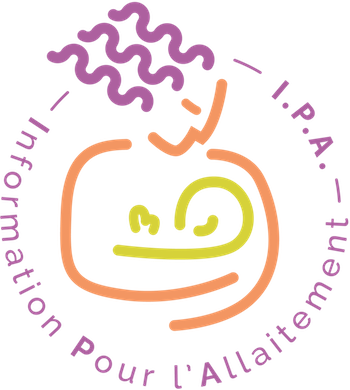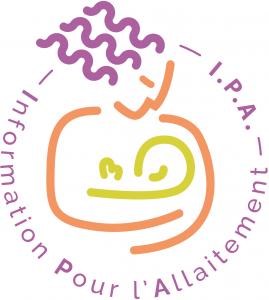Catégories
 > Pathologie > Pathologie de la grossesse > Accouchement compliqué > Prématurité (avant 37 semaines) > Grande prématurité (entre 27 et 31 semaines) > Pathologie > Pathologie de la grossesse > Accouchement compliqué > Prématurité (avant 37 semaines) > Grande prématurité (entre 27 et 31 semaines)
Grande prématurité (entre 27 et 31 semaines) |
Documents disponibles dans cette catégorie (73)
Ajouter le résultat dans votre panier Faire une suggestion Affiner la recherche
Article : texte imprimé
Emel Buldur, Auteur ; Nalan Yalcin Baltaci, Auteur ; Demet Terek, Auteur ; Mehmet Yalaz, Auteur ; Ozge Altun Koroglu, Auteur ; Mete Akisu, Auteur ; Nilgun Kultursay, Auteur |Aim: The aim of this study is to compare the efficiency of a new method called “finger feeding” with a well-known technique called syringe feeding for improving sucking skills and accelerating transition to breastfeeding in preterm infants. M[...]Article : texte imprimé
Maureen Groer, Auteur ; Allyson Duffy, Auteur ; Shannon Morse, Auteur |Background: There has been a recent increase in availability of banked donor milk for feeding of preterm infants. This milk is pooled from donations to milk banks from carefully screened lactating women. The milk is then pasteurized by the Hold[...]Article : texte imprimé
Mary M. Lussier, Auteur ; Elizabeth A. Brownell, Auteur ; Tracey A. Proulx, Auteur |Background: There are no randomized trials comparing early exclusive hand expression (HE) with early exclusive electric pump expression (electric expression [EE]) for milk removal in mothers of very low birth weight (VLBW) infants. Subjects a[...]Article : texte imprimé
Leslie A. Parker, Auteur ; Charlene Krueger, Auteur ; Sandra Sullivan, Auteur |Background Although mother’s own milk decreases prematurity-associated morbidities, mothers of infants born preterm and very low birth weight experience a significantly shorter lactation duration. Little is known regarding factors associated wi[...]Nouveauté
Article : texte imprimé
Determinants of Successful Direct Breastfeeding at Hospital Discharge in High-Risk Premature Infants
Lara Casey, Auteur ; Sandra Fucile, Auteur ; Kimberly E. Dow, Auteur |Background: Despite a mother's intention to breastfeed, there are many barriers to feeding preterm infants that decrease breastfeeding rates. Objective: The objective of this research was to determine factors associated with successful direct[...]Article : texte imprimé
Article : texte imprimé
Carrie-Ellen Briere, Auteur ; Jacqueline M. McGrath, Auteur ; Xiaomei Cong, Auteur |Background: The neonatal intensive care unit (NICU) presents challenges for breastfeeding, especially with feeding directly at the breast (direct-breastfeeding). Objectives: The objectives of this study were to describe the characteristics [...]Article : texte imprimé
Emriye Hilal Yayan, Auteur ; Sibel Kucukoglu, Auteur ; Yeliz Suna Dag, Auteur |Background: Body position affects the gastric emptying rate and hence the amount of gastric residue. Objective: This study aims to analyze the effect of the post-feeding position of preterm infants on gastric residue. Materials and Methods[...]Article : texte imprimé
Emilija Wilson, Auteur ; Kyllike Christensson, Auteur ; Lena Brandt, Auteur |Background: Breast milk is associated with a lower risk of neonatal morbidity in very preterm infants. Despite the benefits, the duration of breastfeeding is shorter in very preterm infants than in term infants. Objective: This study aimed [...]Article : texte imprimé
Sharareh Gharib, Auteur ; Molly Fletcher, Auteur ; Richard Tucker, Auteur |Background: Breastfeeding is associated with major benefits for high-risk infants born prematurely, yet this population faces significant challenges to breastfeeding. Lactation services provide successful interventions, yet the impact of lactat[...]Article : texte imprimé
Belal Alshaikh, Auteur ; Linda Kostecky, Auteur ; Noreen Blachly, Auteur |Objective: Mother's own milk (MOM) remains the key strategy to prevent necrotizing enterocolitis (NEC) in preterm infants. We developed and implemented quality improvement (QI) initiatives to improve rate of using MOM in preterm infants ofArticle : texte imprimé
Yuka Wada, Auteur ; Fumio Suyama, Auteur ; Aiko Sasaki, Auteur ; Jumpei Saito, Auteur ; Yuika Shimizu, Auteur ; Shoichiro Amari, Auteur ; Yushi Ito, Auteur ; Haruhiko Sago, Auteur |Breast milk is the optimum for all infants, but hospitalization in the neonatal intensive care unit can cause separation of mothers and infants, which often interferes with milk secretion. Some reports show that domperidone is effective in promo[...]Article : texte imprimé
Alemdar Dilek Küçük, Auteur ; Özdemir Funda Kardas, Auteur |Objective: The study aims to assess effects of having preterm infants smell amniotic fluid, mother's milk, and mother's odor during heel stick procedure on pain, physiological parameters, and crying duration. Materials and Methods: The study [...]Article : texte imprimé
Elizabeth V. Asztalos, Auteur ; Marsha Campbell-Yeo, Auteur ; Orlando P. daSilva, Auteur |Background: Mothers of preterm infants often are at risk of expressing an inadequate amount of milk for their infants and the use of galactogogues is often considered. Domperidone is a widely used galactogogue with little information available [...]Article : texte imprimé
Iris Morag, Auteur ; Tal Harel, Auteur ; Leah Leibovitch, Auteur |Objectives: To investigate factors that may affect breast milk feeding (BMF) practices among very preterm infants. Materials and Methods: This retrospective study included infants born before 32 weeks gestational age (GA) and monitored up to [...]


















